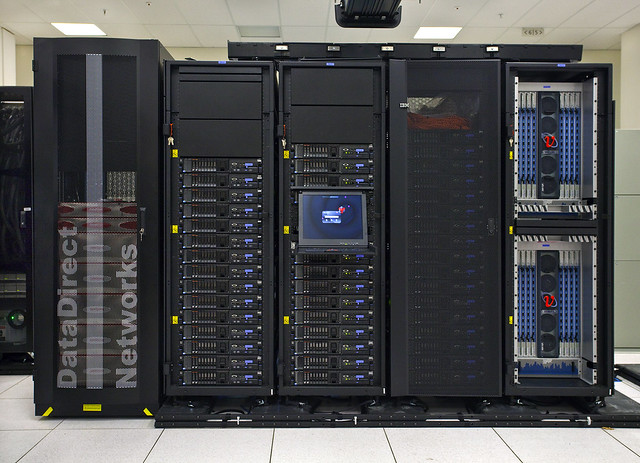When as a facility operator you’re looking to reduce data center energy use, it can be difficult to know where to begin in the process of improving efficiency. Regardless of whether your organization operates a large datacenter, or a small server room, you probably face the same question: Should we start by improving efficiency of the actual IT equipment, the supporting systems such as HVAC, or both?
Where to Begin
One effective approach when tackling data center energy use is to begin by addressing load reduction first, followed by improving the efficiency of the equipment that supports/manages those loads. This is analogous to the approach often taken in building systems: when performing a major building renovation including building shell, internal loads (e.g., lighting), and central plant equipment, new central plant equipment should be sized to address the new, more efficient building load, rather than the pre-renovation loads.
To reduce data center loads, several approaches can be taken on the IT side of the equation to significantly affect energy use, some of which can be accomplished without any additional hardware investment. These primarily boil down to two areas: increasing server utilization and offloading capacity to cloud-based data center services.
Server Utilization
According to a guide recently published by the US DOE’s Federal Energy Management Program (FEMP), “The majority of servers run at or below 20% utilization most of the time, yet still draw full power during the process.”[1] Server utilization is effectively how loaded the server equipment is, as a percentage of total capacity. Technologies entering the mainstream over the past decade have begun to make significant inroads in improving server utilization, most notably, server virtualization.
Server Virtualization
The primary advance which has facilitated higher server utilization rates is a technology called virtualization. In short, virtualization is a method of creating a software version of a physical hardware computer (in this case, a server). From the end user’s perspective (say, a department at a college or a sales team within a company which used to manage their own physical server) the physical-to-virtual conversion is seamless: the end user cannot tell that they have transitioned to interacting with a software version of their server: the interface is identical and performance is not noticeably impacted. From an IT side, however, the new virtual server, which formerly was only running at say, 25% capacity, can be combined with 3 other virtual servers also running at 25% capacity and then can all be placed on a single physical server operating at nearly full load. Effectively, with virtualization, many underutilized servers can be consolidated into fewer physical servers, and significant energy savings can be realized.
While server virtualization is no longer a cutting edge technology, because of relatively long server life spans, a significant amount of low hanging fruit may still exist in any given company’s IT fleet, and accomplishing these savings can be cost a cost effective approach to improved energy performance.
Cloud Services
Many opportunities exist to migrate some or all server processing and/or storage capacity to large, offsite, cloud computing services. Huge, centralized datacenters can achieve extremely high levels of efficiency--typical onsite data centers have PUE (Power-Usage-Effectiveness) values typically between 1.75 and 2.0, whereas large, cloud scale datacenters can achieve PUE’s of <1.2. A wide variety of services exist to meet a range of needs, but some include Amazon.com’s Elastic Compute Cloud (EC2), and Microsoft’s Windows Azure, to name a few.
Not all applications are appropriate for cloud computing transition, and there are tradeoffs which should be examined on a case-by-case basis. For many applications however, significant energy and labor cost savings can be realized in shifting a portion of their datacenter load to cloud services.
Conclusion
There are a range of approaches to saving energy in the modern datacenter and some options may be less capital intensive than others. Consulting with your resident IT geek on possibilities presented by virtualization and cloud computing may be a cost effective place to start reducing energy use in a shorter time frame.
[1] Best Practices for Energy Efficient Data Center Design, US Department of Energy FEMP, March 2011, Page 1: http://www1.eere.energy.gov/femp/pdfs/eedatacenterbestpractices.pdf




